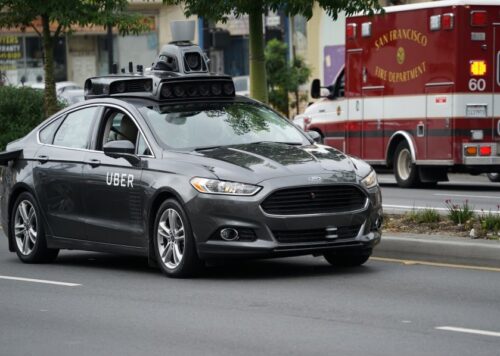Driverless Cars: Friend or Foe?

Last weekend I was thrilled to see, “Congratulations! You have been selected to ride in a self-driving Uber!” appear on my phone screen after requesting a ride on the Uber app. Finally, my chance to personally experience autonomous car technology! And I have to say, it was awesome.
At my request, the specially trained driver and his accompanying research monitor gave me an explanation of how the technology works (I won’t bore you with the details, but this video explains it well! http://www.businessinsider.com/uber-self-driving-car-technology-explained-2016-11) and I was able to view on a screen in the back seat exactly when the car switches between manual operation and “autopilot.”
I am amazed by driverless cars, and personally see the potential for enormous safety benefits. However, many folks don’t share my enthusiasm for the rideshare technology currently sweeping the Valley.
The skepticism in regard to self-driving cars may be due in part to a high speed collision involving a self-driving Uber in Tempe, which put a weekend-long halt to the pilot program in March. While the cause of the accident was being investigated, questions began swirling regarding the safety of self-driving cars and debates rose on whether or not the self-driving Uber was at fault in the accident.
It’s no secret that crisis communications is a vital service all PR practitioners must master, for the simple reason that things don’t always go according to plan. The self-driving Uber collision is a great example of how keeping the public informed can make or break your recovery from a crisis.
At first glance, the collision looks like bad news for the emerging self-driving car business. However, Uber immediately conducted an in-depth investigation of the accident proving that the self-driving Uber had the right of way, was not exceeding the speed limit, and that the collision was caused entirely by human error of the other driver.
Once these facts were released to the public, it became apparent that this “crisis” may have actually proven that self-driving cars, which aim to eliminate human error, could in fact prevent these types of collisions. A robo-car may never win the Indy 500, but it won’t get distracted, intoxicated, or sleepy either. If every car on the road had these abilities, which basically keep the car in its lane and a safe distance away from surrounding vehicles, fatal crashes would be a far less common occurrence, right?
We may need to wait a while longer to see if any major glitches surface, but if a self-driving car can save lives, I say we venture onward! What do you think?

